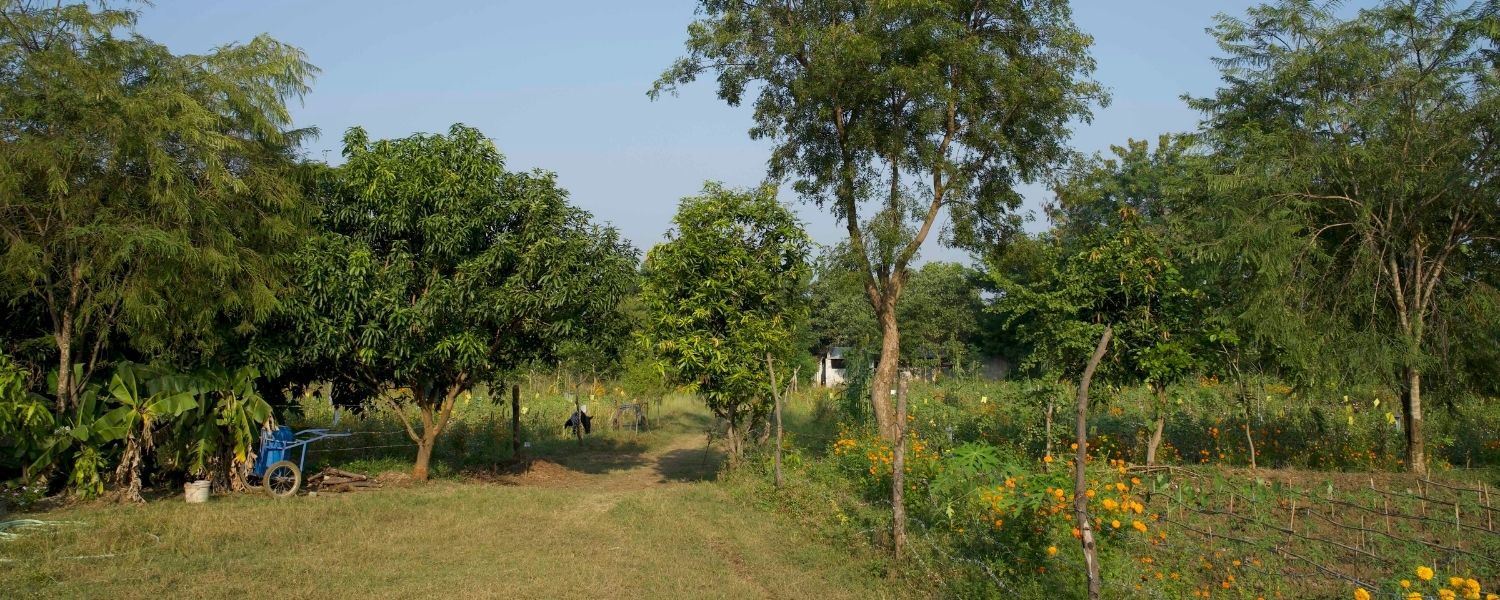Hållbar och av högsta kvalitet
De mjukaste sängkläder och badkläder
Nederländskt märke säljs i 7 europeiska länder
- Bestsellers
- BLACK FRIDAY
- Sängkläder
- Täcken
- Täcken
- KATEGORITEMPERATURDUNTYP
- Kuddar
- Madrasser
- Badrumstextilier
- Kläder
- Kläder
- PYJAMAS
- Filtar
- Tillbehör
- Barn
- Stories
Clean & Green Villages: revolutionising the cotton supply chain
The drought-prone, mountainous districts of Kalahandi and Rayagada in India’s Odisha state are dotted with farming villages, home to thousands of families who play a part in our cotton supply chain. Growing their cotton by hand, many have no access to electricity or safe drinking water. And no hope of escaping a cycle of poverty, drought and climate change.
We couldn’t stand back and watch. In 2020, Yumeko launched a bold experiment to see what happens when villages are transformed not from outside in, but from the inside out. Rather than sending aid or donations and hoping for the best, we joined a holistic, regenerative, knowledge-based programme driven by a sense of ownership and rooted in an alliance with nature.
Chetna Organic – a pioneering cooperation uniting thousands of Fairtrade-certified farming families – is the driving force of sustainable change in this eastern part of India. For years, it has tirelessly promoted organic farming and empowered local communities.
The Clean & Green Villages project was developed in partnership with Chetna, local NGOs and Fairtrade Nederland and with support from the Nationale Postcode Loterij. It has Yumeko’s full support. Why? Because we firmly believe that true sustainability is the sum of all of its parts – from the cotton in the fields to the duvet in your bedroom.

Clean & Green: key figures
- 40,000 trees and shrubs planted by families
- 2,300 women trained to lead climate action
- 71% reduction in cases of malaria and diarrhoea; 97% reduction in hospital admissions
- 40 villages have solar street lighting
- 40 villages have implemented waste management and composting
- Communities have taken charge of local government and monitoring
- Much greater awareness of plastic, water, food and ecosystems
Turning hopelessness into hope
Plentiful in cotton, Odisha’s villages are also faced with plenty of major challenges that require urgent solutions. Damaged ecosystems must be restored, ancient knowledge must be revived and reapplied, women must reclaim their role at the heart of communities, and farmers must work in harmony with nature.
But that’s not all. Global warming is shortening growing seasons, safe drinking water remains scarce, and plastic waste is accumulating in rivers and along roadsides. Many households still cook their meals in closed kitchens, using wood or dung-based fuel, and burn waste in open fires near their homes. There is no sewage system, no street lighting and no composting. Pesticides and chemicals are polluting the soil and drinking water sources. Children are succumbing to disease. Women are the ones having to deal with the fallout – but they also possess the drive to deliver change.
The Clean & Green Villages project is our answer to those challenges. Moving away from disjointed initiatives and temporary aid, it introduces a far-reaching, regenerative movement that reconnects nature and communities. Borne out of a partnership between local communities, FFID, NGOs and Yumeko, this approach gives people – women and children in particular – the tools to independently create lasting change.
Since 2020, we’ve been helping hundreds of farming families in over forty villages to adopt zero-plastic, sustainable, circular practices. Rooted in the local community, they provide hope for the future while protecting the planet and life on earth. And crucially, these practices should be embraced and passed down to future generations.
Initial results show what can happen when communities are empowered to manage their own transformation. At the time of writing, forty villages are close to eliminating plastic from their communities. Over 40,000 trees and shrubs have been planted around houses, fields and wells to provide cooling, shade and food. Solar lighting illuminates streets that were once pitch-black, making people feel safe again. Access to safe drinking water has improved dramatically, with an over-50% decrease in the number of cases of malaria and diarrhoea.
Project goals
- Restoring biodiversity and soil quality
- Harnessing traditional, local knowledge of sustainable farming
- Developing skills among women to lead climate action
- Introducing waste management systems and zero-plastic communities
- Improving drinking water safety, hygiene and sanitation
- Installing sustainable solar energy systems
- Creating local leadership structures to embed change
The power of local knowledge
For centuries, communities in this part of Odisha lived in harmony with nature. They knew exactly how to nurture the soil, how to conserve water, which plants possessed medicinal properties and which trees should be protected. However, this deep-rooted knowledge has faded. Years of impoverishment, urbanisation, monoculture and climate change have left once self-sustaining communities reliant on fertilisers, seed companies and aid donations.
The Clean & Green Villages project seeks to reverse that trend. As a movement to restore lost knowledge and embed it in daily life, it teaches communities about biodiversity, waste and water management, composting and food security. A relearning of old, local ways rather than a lecturing from outsiders.
The zero-waste philosophy is at the heart of a clean village. The practice of incinerating or dumping waste in dry riverbeds was replaced by new approaches. Households learned to sort waste. Streets were no longer littered with plastic. Composting trenches were dug by hand. Women set up microbusinesses making reusable bags and compost bins. Some villages even installed entrance signs to their villages proudly displaying ‘no plastic’.
The results are nothing short of transformative. Waste dumps are now lush, flourishing kitchen gardens; the air is filled not with the fumes of burning waste, but the scent of earthy compost. People have regained pride in their communities.
Results:
- 40 villages began composting and sorting waste
- 50% of households planted trees and shrubs on their land
- Villages installed ‘no plastic’ entrance signs
- Greater awareness of soil health and plastic pollution
Women as champions of change
Climate action is a gender issue. Women are being left in the lurch, despite being the very people who can stimulate real change. Fetching water, preparing meals, raising children and tending to the garden, they represent the backbone of Odisha’s communities. But as an invisible workforce, they often have no voice in climate change decisions.
Clean & Green Villages changed all this. Not by imposing rules, but through empowerment. The project invited women in every village to apply their knowledge and talents. Many jumped at the chance, showing their prowess in waste sorting and tree care and their enthusiasm to be the first adopters of new hygienic habits.
Women in Chanchalguda started their own tree nursery, growing mango, guava and neem saplings. In time, these will provide much-needed nutrition, shade and healing powers. Within a year, the women distributed five thousand trees among village residents. Other women’s collectives broke through social taboos, making reusable sanitary towels from organic cotto and discussing women’s health issues in schools.
At the time of writing, thousands of women have completed a climate action leadership programme. These graduates are now leading initiatives in their communities, focusing on composting, water storage, kitchen gardens and behavioural change. They provide advice, manage projects and are active members of village councils.
Results:
- 2,300 women trained to be climate action leaders
- 64% participating in local government
- Four active, women-led tree nurseries
- 5,000 trees grown from seed and distributed
- 78% of women planted a kitchen garden
Health as a catalyst of change
Access to safe water and sanitation is a basic human right, not a luxury. Human health is therefore at the heart of sustainable supply chains. It can only be guaranteed by providing safe toilets, drinking water and knowledge of sanitation. Yet there are still people who must walk miles to collect water for cooking and bathing, praying it won’t make them sick.
Ancient wells disappeared in the dry season, while monsoon rains transformed muddy paths into open sewers. If water was too far away, it was also too polluted to drink: a source of infection, skin disease and malaria. That’s why Clean & Green Villages spearheaded water and sanitation issues.
Working together with communities, we installed affordable, local sources of water by restoring wells, collecting rainwater, digging trenches and constructing foot-operated handwashing stations using readily available materials like bamboo, clay and jerrycans.
Sanitation facilities were also upgraded with odourless, low-maintenance compost toilets, giving users the dignity they deserve. Community members broke menstruation taboos by holding talks, distributing reusable kits and providing personal hygiene training. Periods are no longer a source of shame. One school reported a 70% drop in sickness absence. In another village, children taught their parents about the importance of handwashing.
This is a paradigm shift from cure to prevention. And the results speak for themselves:
Results:
- Significant improvement in water quality
- 71% reduction in cases of malaria
- 65% reduction in cases of diarrhoea
- 97% of families report a drop in out-of-pocket spending on hospital admissions
- Significant reduction in missed school attendance
A life-changing light
Until recently, night-time in Odisha’s villages meant complete darkness – not by choice, but by necessity. There was no electricity nor lighting, just the flickering light of oil lamps or open fires. Women would stay inside, children were unable to do homework, and older community members would trip over tree roots on their way to the toilet.
Clean & Green Villages’ solar energy systems changed all this by installing street lighting in 32 villages. More than illuminating communities, these simple lights also met that most basic of human needs: safety.
Residents themselves said that street lighting was one of the most transformative changes. They now feel seen, both literally and figuratively.
Results:
- Solar street lighting installed in 32 villages
- Women feel safer and play a more active role in village life
- Children no longer do their homework in the dark and show improved academic performance
- Older people feel safer being outdoors at night
- Residents and health workers report a decline in the number of snake bites at night
- Village councillors can also meet in the evening and experience less time pressure
Villages as drivers of change
A local committee of farmers, women, young people and elderly members was set up in each of the 40 participating villages to independently manage the Clean & Green process. Committee members worked in unison to plan, prioritise and track progress, organising tree-planting days, managing waste streams, improving water management and monitoring community health. In many villages, women represent over half of committee members.
Meetings are held under a mango tree, chalkboards at the ready, and voting is decided by show of hands. For the first time in years, local decision-making brings together and involves all castes and generations. While members receive support to improve their organisational and administrative skills, they remain in control of decisions. Why? Because ownership is the catalyst of lasting change.
Results:
- Village leadership structures restored
- Public authorities have joined the movement, increasing transparency
- Communities are more emboldened and autonomous than ever
From bare fields to green oases
In Clean & Green villages, new life springs up around every house, yard and well. Communities collectively planted over 40,000 trees – including fruit trees, shady species and medicinal plants – as a source of food and cooling as well as a means to reconnect with the land.
Those trees also acted as a magnet for biodiversity: butterflies and bees returned, and birds sought refuge in the shade. Farmers reported better crop resilience to drought and improved soil health. Composting and mulching revived soil life, improved water retention and provided fertile ground for new crops of lentils, herbs and vegetables.
And this is only the beginning
The green transformation taking place in villages brings hope. But these achievements hang in the balance. With a worsening climate crisis, persistent plastic pollution, young people leaving villages to seek opportunities elsewhere and communities unable to keep pace with rapid policy changes, the work is far from over.
At Yumeko, we believe that sustainable supply chains are built on transparency: about where cotton comes from, who grew it and what’s needed to ensure the livelihood and dignity of future generations. That’s why we’re investing on the ground. Rather than sending impersonal packages of aid, we’re out there helping communities – the backbone of our products. Together, we’re developing new ways to build a future in which all people have a right to be heard and join the conversation.
In 2024, we started a pilot to give farmers and village communities a voice. In the Rightsholder Dialogue (read more) they talk about their needs, what does and doesn’t work, and how our brand can contribute as an equal partner. Listening to and collaborating with communities is key to building a sustainable and regenerative chain for people and the planet.
We invite the entire textile industry to take responsibility. Not by displaying yet another certificate on yet another label. But by investing in the people and places that produce your materials. By allocating the time and resources and by placing trust in communities that care for those commodities.
Will you be the next link in our Open Organic Cotton Chain?












